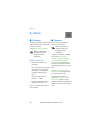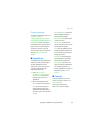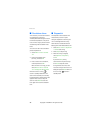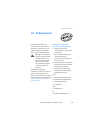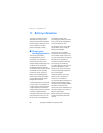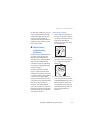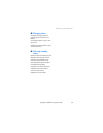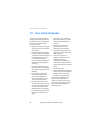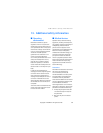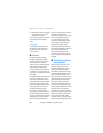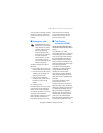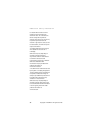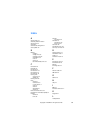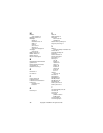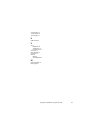
Copyright © 2005 Nokia. All rights reserved.
Additional safety information
37
(such as propane or butane), and areas
where the air contains chemicals or
particles such as grain, dust or metal
powders.
■ Emergency calls
Important: Wireless phones,
including this phone, operate
using radio signals, wireless
networks, landline networks,
and user-programmed
functions. Because of this,
connections in all conditions
cannot be guaranteed.
You should never rely solely
on any wireless phone for
essential communications like
medical emergencies.
To make an emergency call, do the
following:
1. If the phone is not on, switch it on.
Check for adequate signal strength.
2. Press the end key as many times as
needed to clear the display and
ready the phone for calls.
3. Enter the official emergency
number for your present location.
Emergency numbers vary by
location.
4. Press the call key.
If certain features are in use, you may
first need to turn those features off
before you can make an emergency
call. Consult this guide or your service
provider for more information.
When making an emergency call, give
all the necessary information as
accurately as possible. Your wireless
device may be the only means of
communication at the scene of an
accident. Do not end the call until
given permission to do so.
■ Certification
information (SAR)
THIS DEVICE MEETS INTERNATIONAL
GUIDELINES FOR EXPOSURE TO RADIO
WAVES
Your mobile device is a radio
transmitter and receiver. It is designed
and manufactured not to exceed the
limits for exposure to radio frequency
(RF) recommended by international
guidelines (ICNIRP). These limits are
part of comprehensive guidelines and
establish permitted levels of RF energy
for the general population.
The guidelines were developed by
independent scientific organisations
through periodic and thorough
evaluation of scientific studies.
The guidelines include a substantial
safety margin designed to assure the
safety of all persons, regardless of age
and health.
The exposure standard for mobile
devices employs a unit of
measurement known as the Specific
Absorption Rate, or SAR. The SAR limit
stated in the international guidelines is
2.0 watts/kilogram (W/kg)*. Tests for
SAR are conducted using standard
operating positions with the device
transmitting at its highest certified
power level in all tested frequency
bands. Although the SAR is determined
at the highest certified power level,



